Read all of art critic David Apatoff’s columns here.
The first practical refrigerators were invented a century ago and instantly transformed American domestic life. The Saturday Evening Post was flooded with advertisements for the strange new devices. Illustrators were hired to help the public imagine how refrigerators would fit into a home and envision the role they could play. Some were more successful than others.
Inventor Fred Wolf of Ft. Wayne, Indiana started the rush in 1913, with the announcement of the first refrigerator for home and domestic use. A year later, an engineer in Detroit jumped in with his suggestion for an electric refrigerator, the predecessor of the famous Kelvinator. By 1918, the demand for the new invention had become clear, and the Frigidaire company was founded to mass produce refrigerators.
Rival companies popped up, each trying to outdo the others with features they thought the public might like. For example, Kelvinator touted the first refrigerator with an automatic control. Electrolux offered what it called the first “absorption refrigerator.” Inventors and engineers battled over the science. Here is a two-page ad from the Post bragging about the factory where the “hermetically sealed refrigerating unit” is contained within the “steel monitor top.”
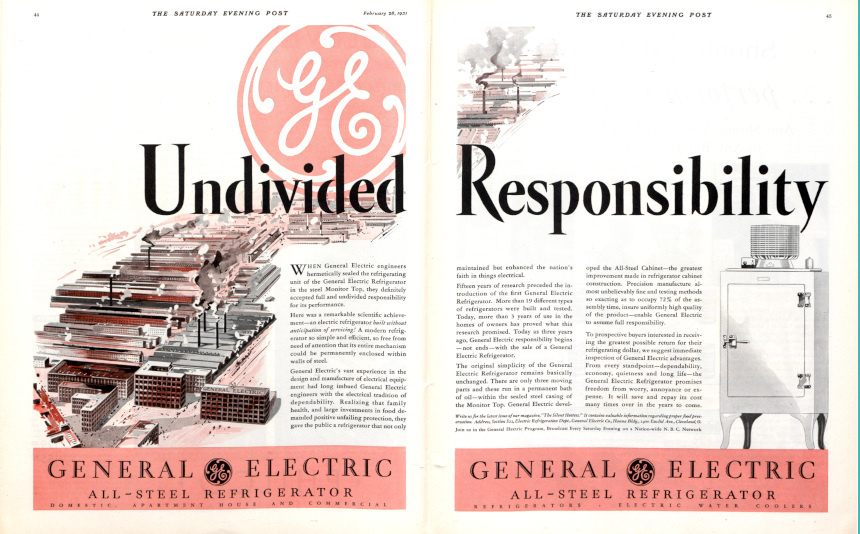
But it took art, not science, to humanize the strange new invention. Refrigerator companies faced a big challenge selling the new invention to everyday Americans; in 1922 a refrigerator could cost over $700 while a new car (the Model T Ford) cost only $450. The public wouldn’t buy refrigerators without a vision for how they would fit into the American lifestyle.
Here we see a 1929 painting by Walter Biggs of a high-class social event:
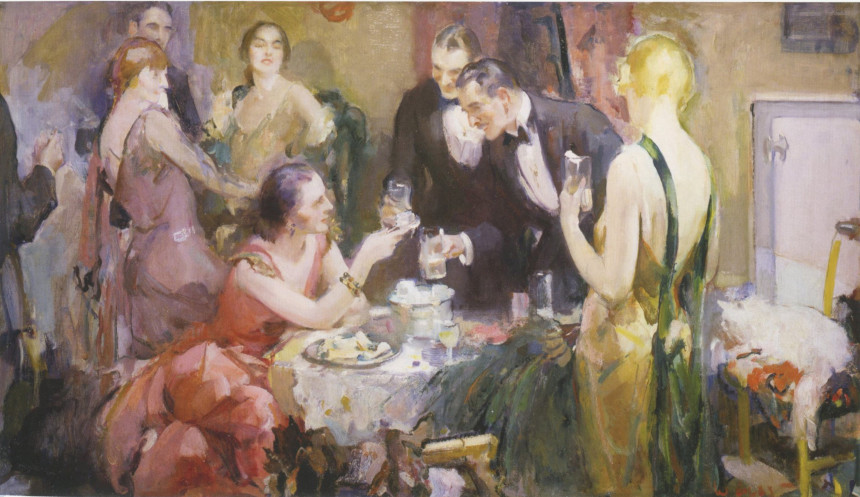
The men are wearing tuxedos and the women dressed in fashionable gowns. They smile as they exchange witty banter about cultural events. But the real star of the party—and the whole reason for the painting—is that brand new refrigerator in the far right hand corner.
Right smack dab in the center of the painting is the modern miracle… glasses filled with ice! Ice was readily available for guests for the first time with the invention of the refrigerator. Today we wouldn’t think of keeping our refrigerator in the middle of our dining room with the guests, but this picture tells us that it was a mark of prestige.
Next, this enterprising artist tries to portray the refrigerator as a springboard to romance. (Hah! Good luck with that!)
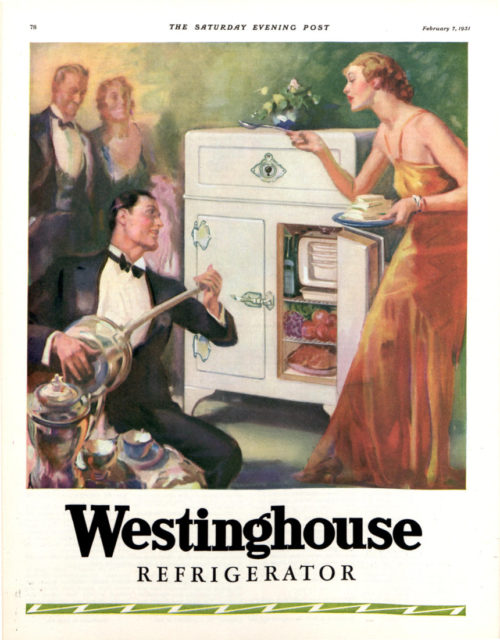
Another artist felt he could make the new invention popular with a “science fiction” approach:
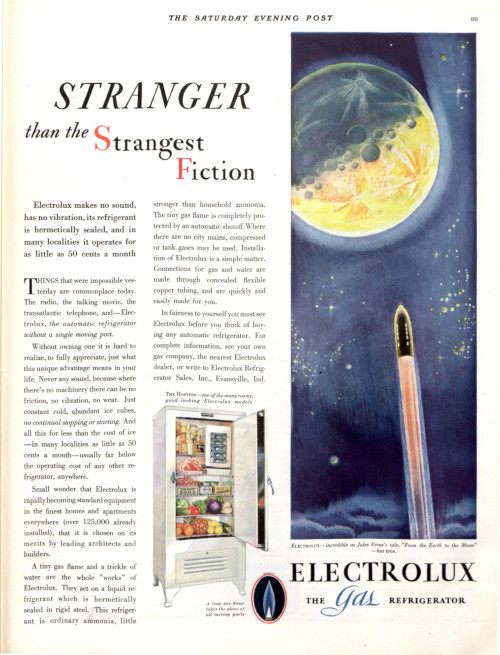
This artist does his best to make a white metal cube look stylish by making it a tiny element in a large, black and gold art deco picture. Note that Al Dorne’s harried, overworked housewife has become an elegant young woman of leisure in an evening gown.
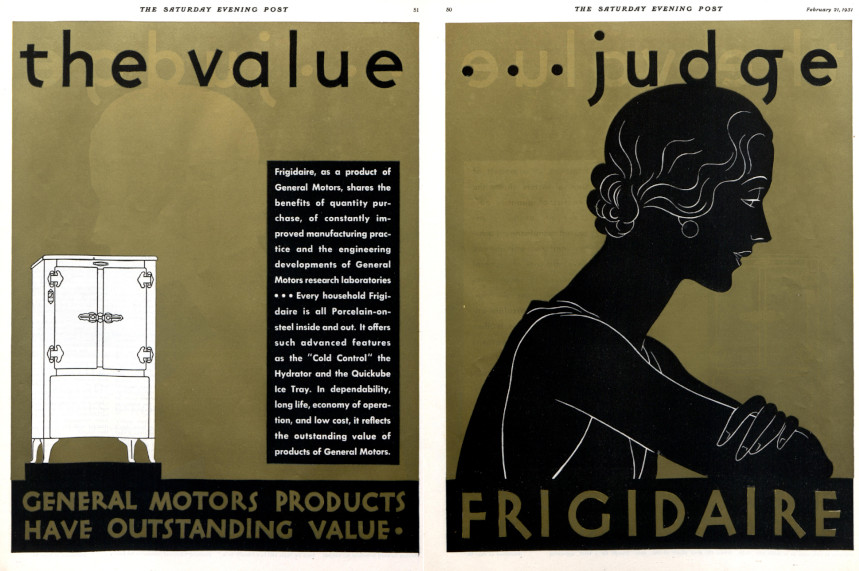
There were even illustrations for consumers who felt that a refrigerator was “like magic.”
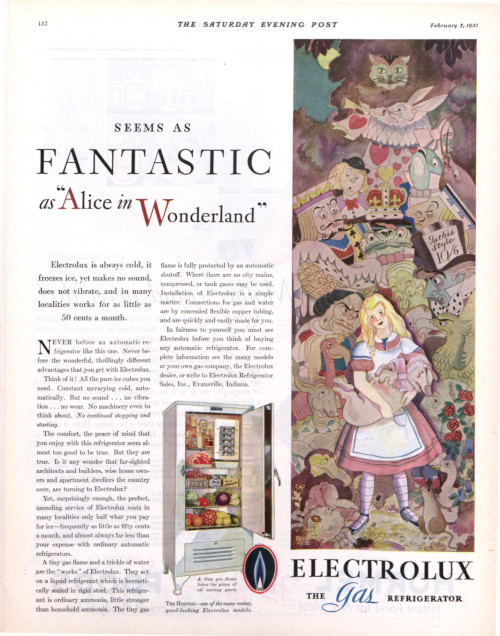
Today many of these approaches seem silly to us, but in the beginning before the identity of the refrigerator had been firmly established, artists could let their imaginations run wild.
It always takes a while for people to figure out the proper role for the new invention; when trains first arrived on the scene, they were noisy and frightening. They spooked horses and polluted the environment with smoke and cinders. But artists and musicians and storytellers began to humanize the new machine, singing folk songs and telling tales, and pretty soon we welcomed trains into our cultural heritage.
We rely upon the artistic imagination to help us view our strange new inventions and assimilate them into our natural world. Nothing like the refrigerator had ever existed before, so there were no precedents for artists to rely on. Some of the earlier efforts make us laugh today, but eventually illustrators found their footing.
Featured image: Courtesy of the Kelly Collection of American Illustration
Become a Saturday Evening Post member and enjoy unlimited access. Subscribe now
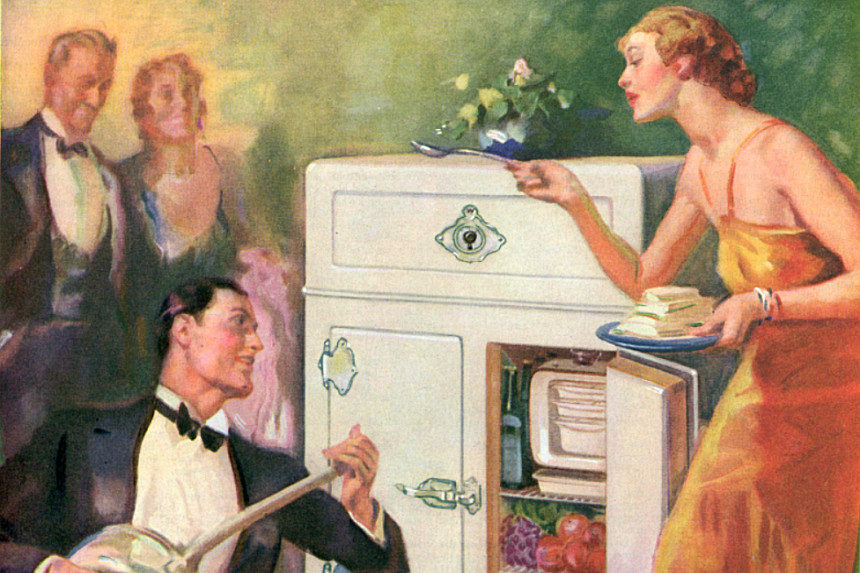

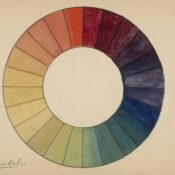

Comments
Great feature, David! It’s been awhile. Hope you’ve been okay during the situation. So today you again tackle the dilemma of how to best advertise a product that never existed before, not unlike your automobile illustration (dilemma) feature of two years ago.
The whole ball on the refrigerator front really got rolling in 1913, with the ad departments of the various companies trying to figure things out like the auto companies. I wonder if there was ever any ‘cross-sharing’ of ideas between ad guys of these unlikely products with the same problem. Say, General Motors with Frigidaire?
It looks like things got pretty competitive between Kelvinator, Electrolux and more, but ultimately better products for the consumer. It better have. $700 for a new refrigerator, yet $450 for a new Ford?! You’d think it would be the reverse, but not in 1922, obviously.
The 1929 color ad by Walter Biggs is beautiful, but ‘product subtle’, so I’d have to see the rest of the ad it to judge its effectiveness. The product though relatively new, HAD been around about 16 years by then. Still, I’m glad you pointed out the ice cubes in the glasses. Truthfully, I overlooked it. As far as the Westinghouse ad promoting romance, it better be promoting a romance: with that expensive fridge, David. These people don’t appear to be affected by the Depression, that’s for sure.
The sci-fi Electrolux (gas!) ad is pretty interesting and futuristic for 1931. It clearly shows the refrigerator open and filled. It’s heavy on the ad copy (couldn’t read it) but should explain a lot. Same with the ‘Alice In Wonderland ad in its set up. Love the Frigidaire ad. All porcelain-on-steel inside and out. The ad copy simple with the product visible on the left, and the mesmerizing woman in all her art deco glory on the right.I wouldn’t mind a framed copy of that one. Interesting how the ‘ancient classical’ Westinghouse ad came one month before the one of romance!